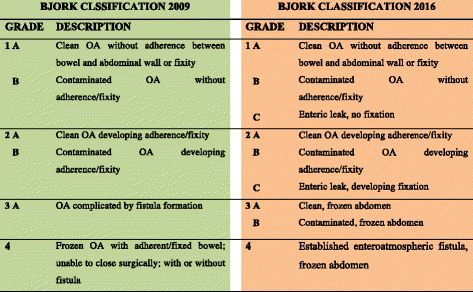The open abdomen in trauma and non-trauma patients: WSES guidelines
- PMID: 29434652
- PMCID: PMC5797335
- DOI: 10.1186/s13017-018-0167-4
The open abdomen in trauma and non-trauma patients: WSES guidelines
Abstract
Damage control resuscitation may lead to postoperative intra-abdominal hypertension or abdominal compartment syndrome. These conditions may result in a vicious, self-perpetuating cycle leading to severe physiologic derangements and multiorgan failure unless interrupted by abdominal (surgical or other) decompression. Further, in some clinical situations, the abdomen cannot be closed due to the visceral edema, the inability to control the compelling source of infection or the necessity to re-explore (as a "planned second-look" laparotomy) or complete previously initiated damage control procedures or in cases of abdominal wall disruption. The open abdomen in trauma and non-trauma patients has been proposed to be effective in preventing or treating deranged physiology in patients with severe injuries or critical illness when no other perceived options exist. Its use, however, remains controversial as it is resource consuming and represents a non-anatomic situation with the potential for severe adverse effects. Its use, therefore, should only be considered in patients who would most benefit from it. Abdominal fascia-to-fascia closure should be done as soon as the patient can physiologically tolerate it. All precautions to minimize complications should be implemented.
Keywords: Biological; Closure; Fistula; Guidelines; Intra-abdominal infection; Laparostomy; Mesh; Non-trauma; Nutrition; Open abdomen; Pancreatitis; Peritonitis; Re-exploration; Reintervention; Synthetic; Technique; Timing; Trauma; Vascular emergencies.
Conflict of interest statement
Not applicableNot applicableThe authors declare that they have no competing interests.Springer Nature remains neutral with regard to jurisdictional claims in published maps and institutional affiliations.
Figures
References
-
- Kirkpatrick AW, Roberts DJ, De Waele J, Jaeschke R, Malbrain MLNG, De Keulenaer B, et al. Intra-abdominal hypertension and the abdominal compartment syndrome: updated consensus definitions and clinical practice guidelines from the World Society of the Abdominal Compartment Syndrome. Intensive Care Med. 2013;39:1190–1206. - PMC - PubMed



